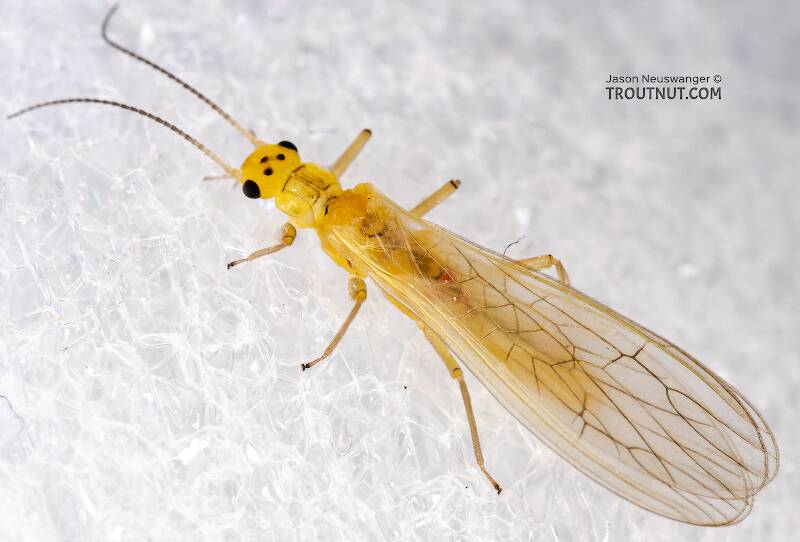
Blue-winged Olives
Baetis
Tiny Baetis mayflies are perhaps the most commonly encountered and imitated by anglers on all American trout streams due to their great abundance, widespread distribution, and trout-friendly emergence habits.


Stonefly Species Sweltsa onkos (Sallflies)
Species Range
Physical description
Most physical descriptions on Troutnut are direct or slightly edited quotes from the original scientific sources describing or updating the species, although there may be errors in copying them to this website. Such descriptions aren't always definitive, because species often turn out to be more variable than the original describers observed. In some cases, only a single specimen was described! However, they are useful starting points.
Description from GBIFthe Global Biodiversity Information Facility
Source: Larvae Of Eight Eastern North American Sweltsa (Plecoptera: Chloroperlidae)
Mature larva. Body length 7.5 - 8.5 mm. General color brown, abdomen chestnut brown; body without distinctive pattern except underlying adult features in pharate individuals. Thorax and abdomen covered with abundant dark clothing hairs. Pronotum bearing ca. 20 anterolateral setae, and ca. 19 posterolateral setae; both rows extend to near median suture (Fig. 21). Mesonotum bearing ca. 13 outer marginal setae and a few inner marginal setae (Fig. 22). Foreleg with sparse femoral and more extensive tibial fringe setae; femora with ca. 5 long thick setae on dorsal margin and ca. 9 on ventral margin (Fig. 23); tibiae bearing 3 - 4 long thin outer marginal setae and ca. 5 inner marginal thick setae. Abdominal tergum 8 with posterior fringe complete; mesally fringe includes mixed thin and thick setae (Fig. 24); lateral intercalary setal cluster includes ca. 14 thick setae. Cerci with ca. 14 - 15 segments; long dorsal setae in apical segmental whorls about as long as two segments (Fig. 25).
Specimens of the Stonefly Species Sweltsa onkos
1 Adult
Start a Discussion of Sweltsa onkos
Stonefly Species Sweltsa onkos (Sallflies)
Species Range
Common Names
Resources
- NatureServe
- Integrated Taxonomic Information System
- Global Biodiversity Information Facility
- Described by Ricker, W.E. (1936) New Canadian perlids (Part II). The Canadian Entomologist 67, 256–264. [1935]


